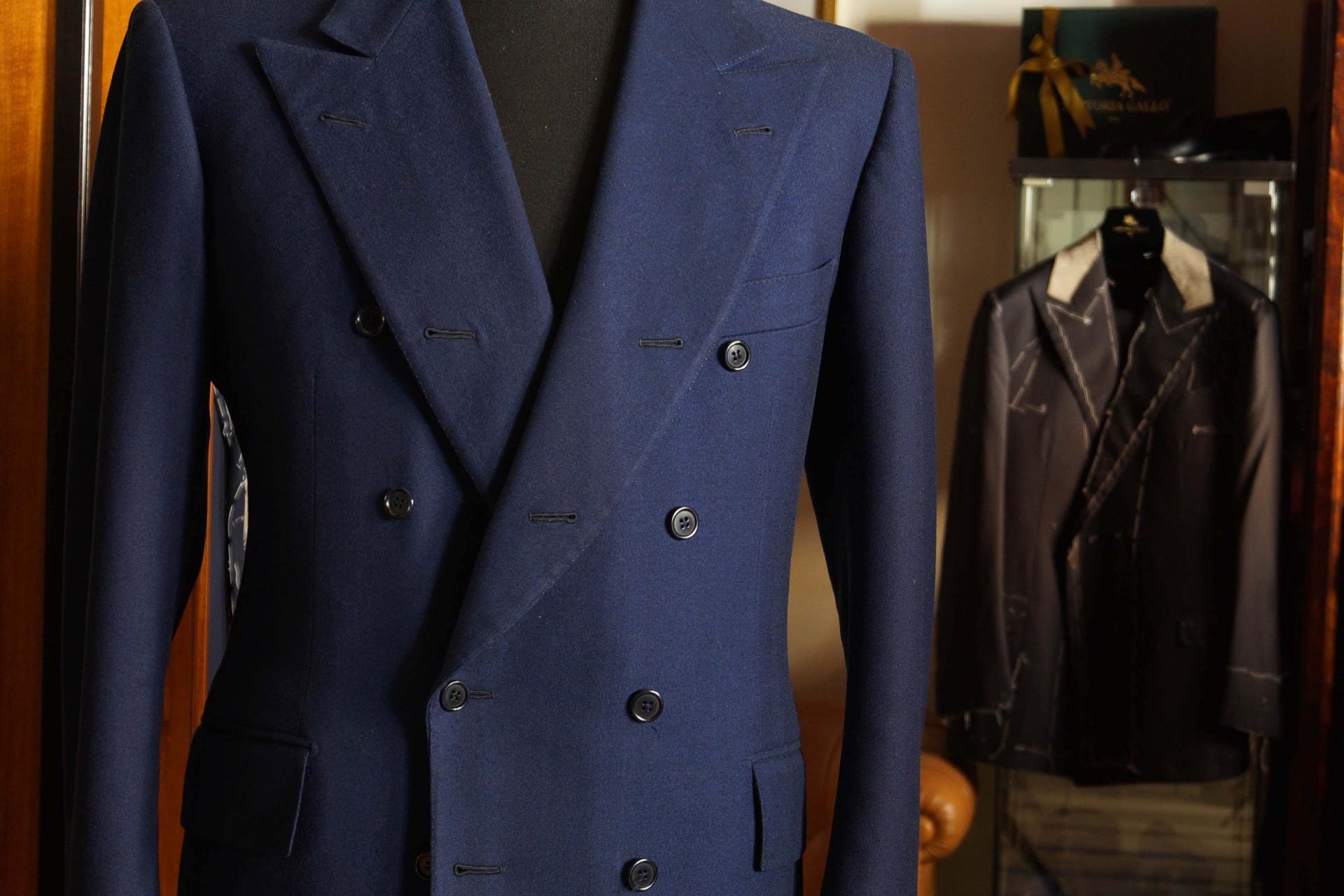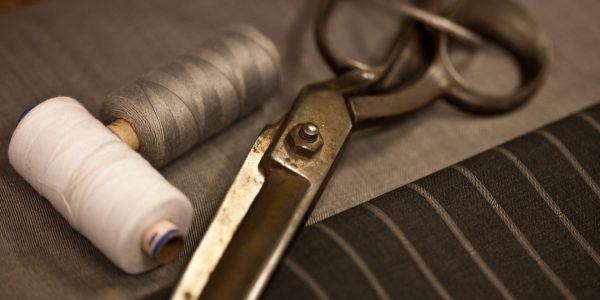
The suit is the basic element of the male wardrobe. The two most common types are the double-breasted and the single-breasted (with two or three buttons depending on the tailoring customs). In addition, there is a three-piece suit accompanied by a waistcoat, a garment that was widely used in the past. The suit is the basic element of the male wardrobe. The two most common types are the double-breasted and the single-breasted (with two or three buttons depending on the tailoring customs). In addition, there is a three-piece suit accompanied by a waistcoat, a garment that was widely used in the past.
In this article I will focus on the most symbolic part, for obvious reasons, of a tailored suit: the jacket. The goal is to outline the main components and be able to be useful, with some advice, for a first approach to tailoring.
First of all, the jacket must please those who commission it. It seems obvious, but it is he who will ultimately wear it, beyond all the canons we could talk about. Basically, there are rules, but if the customer feels a clearly wide jacket tight or, vice versa, complains about a tight jacket asking the tailor to widen it, his requests can only be satisfied.
If the saying is true that “What is beautiful is not beautiful, but what you like is beautiful, in my opinion beauty is not only subjective, which is why, despite the diversity of tastes that distinguish us, we must be some objective rules to follow. The line of a dress is intended to enhance your figure and must “fit perfectly”, obviating any physical imperfections. But what must be taken into account in order to have a suitably wearable suit?
The chest
The jacket must be calibrated in such a way that it can be buttoned even when sitting down. Not only that, the neckline – the adherence to the neck on the sides and back – is also essential. A low-cut jacket could create embarrassing gaps, both with the chest and with the collar of the shirt, instead with a very tight one you run the risk of creating unpleasant folds to form an “X”.
Shoulders
They must be wide enough, and not narrow or right as today’s fashion dictates, to allow the adjacent sleeve to go down perpendicularly, but not too wide to enlarge the figure.
The sleeves
Whereas the classic canines of the masculine style dictate that they are long enough to let the shirt cuffs show (1.3 cm maximum).
The armhole
To be clear, the part of the jacket that wraps around the armpit and corresponds to the point where the sleeve attaches to the body of the garment. The diameter of the sleeve should be calculated to allow the armpit to rotate inside without the fabric being pulled. A poorly constructed armhole, once the arms are raised almost like an airplane, could burden the subject’s mobility if it is too tight, or generate unpleasant visual effects given the excess of the fabric in the underarm area, if too wide.
Furthermore, the details that may appear futile should not be forgotten, but which instead give harmony to the dress.
Lapels, for example, must be cut according to the type of suit (with a double-breasted one will choose spear lapels no less than 11.5 cm wide, with a single-breasted one, on the other hand, the tailoring always imposes wide collars from 9 cm upwards, symbol of pride and safety for a man) and the physical needs of the customer (who is full or not too tall needs to be wide and long enough to slender the body and harmonize the proportions making the bust appear taller).
In terms of lengths, the ideal one is when the jacket covers the crotch of the pants. Still on the subject of the right measurements, the side slits should be cut at a height higher than that of the pockets in order to slim the figure, which instead would be swollen and deformed with shallow slits.
As you can see, all these precautions are not only used to fill any physical gaps of the client, but to streamline his figure upwards and to create a visually perfect combination of balance and symmetry, attributes that only a tailored suit can manage. guarantee.
Shoulders
They must be wide enough, and not narrow or right as today’s fashion dictates, to allow the adjacent sleeve to go down perpendicularly, but not too wide to enlarge the figure.
The sleeves
Whereas the classic canines of the masculine style dictate that they are long enough to let the shirt cuffs show (1.3 cm maximum).
The armhole
To be clear, the part of the jacket that wraps around the armpit and corresponds to the point where the sleeve attaches to the body of the garment. The diameter of the sleeve should be calculated to allow the armpit to rotate inside without the fabric being pulled. A poorly constructed armhole, once the arms are raised almost like an airplane, could burden the subject’s mobility if it is too tight, or generate unpleasant visual effects given the excess of the fabric in the underarm area, if too wide.
Furthermore, the details that may appear futile should not be forgotten, but which instead give harmony to the dress.
Lapels, for example, must be cut according to the type of suit (with a double-breasted one will choose spear lapels no less than 11.5 cm wide, with a single-breasted one, on the other hand, the tailoring always imposes wide collars from 9 cm upwards, symbol of pride and safety for a man) and the physical needs of the customer (who is full or not too tall needs to be wide and long enough to slender the body and harmonize the proportions making the bust appear taller).
In terms of lengths, the ideal one is when the jacket covers the crotch of the pants. Still on the subject of the right measurements, the side slits should be cut at a height higher than that of the pockets in order to slim the figure, which instead would be swollen and deformed with shallow slits.
As you can see, all these precautions are not only used to fill any physical gaps of the client, but to streamline his figure upwards and to create a visually perfect combination of balance and symmetry, attributes that only a tailored suit can manage. guarantee.




